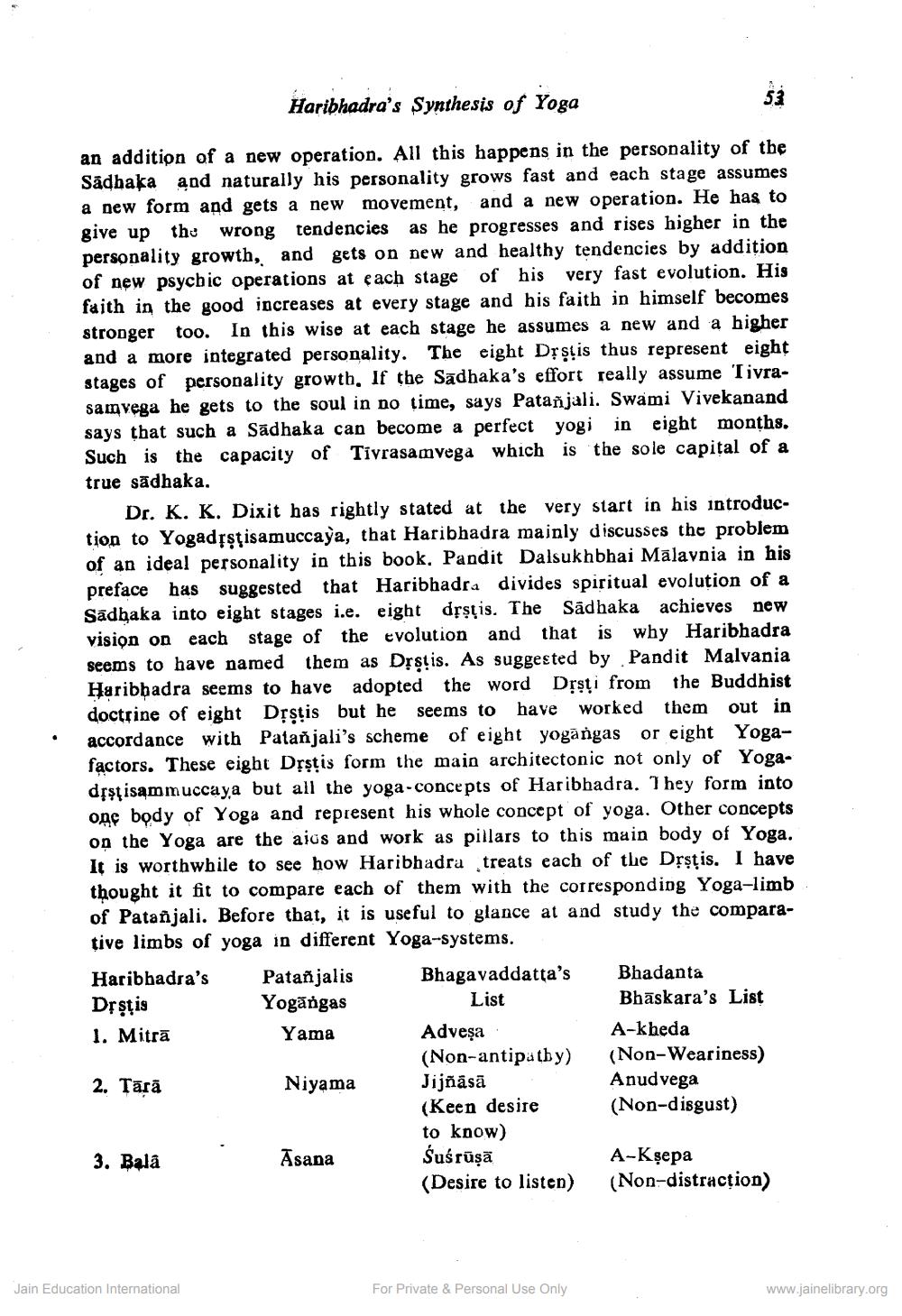________________
Haribhadra's Synthesis of Yoga
an addition of a new operation. All this happens in the personality of the Sadhaka and naturally his personality grows fast and each stage assumes a new form and gets a new movement, and a new operation. He has to give up the wrong tendencies as he progresses and rises higher in the personality growth, and gets on new and healthy tendencies by addition of new psycbic operations at each stage of his very fast evolution. His faith in the good increases at every stage and his faith in himself becomes stronger too. In this wise at each stage he assumes a new and a higher and a more integrated personality. The eight Drşțis thus represent eight stages of personality growth, If the Sadhaka's effort really assume livrasamvega he gets to the soul in no time, says Patanjali. Swami Vivekanand says that such a Sadhaka can become a perfect yogi in eight months. Such is the capacity of Tivrasamvega which is the sole capital of a true sādhaka.
Dr. K. K. Dixit has rightly stated at the very start in his introduction to YogadȚştisamuccaya, that Haribhadra mainly discusses the problem of an ideal personality in this book, Pandit Dalsukhbhai Mālavnia in his preface has suggested that Haribhadra divides spiritual evolution of a Sādhaka into eight stages i.e. eight drstis. The Sadhaka achieves new vision on each stage of the evolution and that is why Haribhadra seems to have named them as Dşsis. As suggested by Pandit Malvania Haribhadra seems to have adopted the word Drsti from the Buddhist doctrine of eight Dțstis but he seems to have worked them out in accordance with Patanjali's scheme of eight yogāngas or eight Yogafactors. These eight Dịştis form the main architectonic not only of Yogadịştisammuccaya but all the yoga-concepts of Haribhadra. They form into onę body of Yoga and represent his whole concept of yoga. Other concepts on the Yoga are the aics and work as pillars to this main body of Yoga. It is worthwhile to see how Haribhadra treats each of the Drsțis. I have thought it fit to compare each of them with the corresponding Yoga-limb of Patanjali. Before that, it is useful to glance at and study the comparative limbs of yoga in different Yoga-systems. Haribhadra's Patañjalis Bhagavaddatta's Bhadanta Dşstis Yogāngas
List
Bhāskara's List 1. Mitrā Yama Adveşa
A-kheda
(Non-antipathy) (Non-Weariness) 2. Tārā Niyama Jijñāsā
Anudvega (Keen desire (Non-disgust)
to know) 3. Bala
Asana Suśrūşā
A-Kșepa (Desire to listen) (Non-distraction)
Jain Education International
For Private & Personal Use Only
www.jainelibrary.org




